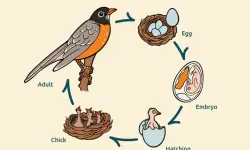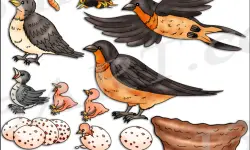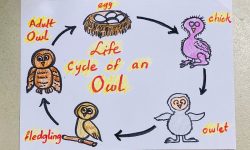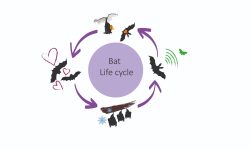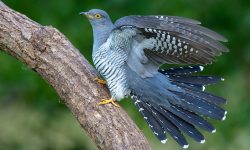Michigan’s diverse habitats—from farmlands and grasslands to shrubby woodlands—provide a home for a fascinating group of ground-dwelling birds: quail and pheasants. These species, often overlooked in favor of more vocal songbirds or majestic raptors, play a vital role in local ecosystems and continue to capture the interest of birders, conservationists, and hunters alike. While Michigan is not the epicenter of game birds in the U.S., it still hosts several notable species. This article explores four quail and pheasant species found in the state, their habits, habitats, and how you can observe them in the wild.
1. Northern Bobwhite (Colinus virginianus)

Identification
The Northern Bobwhite is a small, chunky quail with a short tail and rounded body. Males sport a bold black-and-white facial pattern, while females have a subtler buff-colored face. Their plumage is mottled brown, ideal for blending into grassy cover.
Distribution in Michigan
Once widespread across southern Michigan, the Northern Bobwhite has experienced a significant population decline in recent decades. Today, it persists mainly in limited pockets of the southern Lower Peninsula, where grasslands, hedgerows, and brushy edges remain intact.
Behavior and Ecology
Bobwhites are ground foragers that feed on seeds, insects, and leaves. They form tight coveys outside of breeding season, and males give a distinctive “bob-WHITE!” whistle in spring and summer. Nests are hidden in grassy clumps, and the female may lay a clutch of 12 or more eggs.
Conservation Status
In Michigan, the Northern Bobwhite is considered a species of special concern due to habitat loss and fragmentation. Agricultural intensification and pesticide use have further limited suitable habitat.
Where to Spot Them
Look for bobwhites in restored prairies, grasslands, and conservation reserve lands in southern counties like Berrien, Cass, or Kalamazoo. Early mornings are often the best time to hear their calls.
2. Ring-necked Pheasant (Phasianus colchicus)
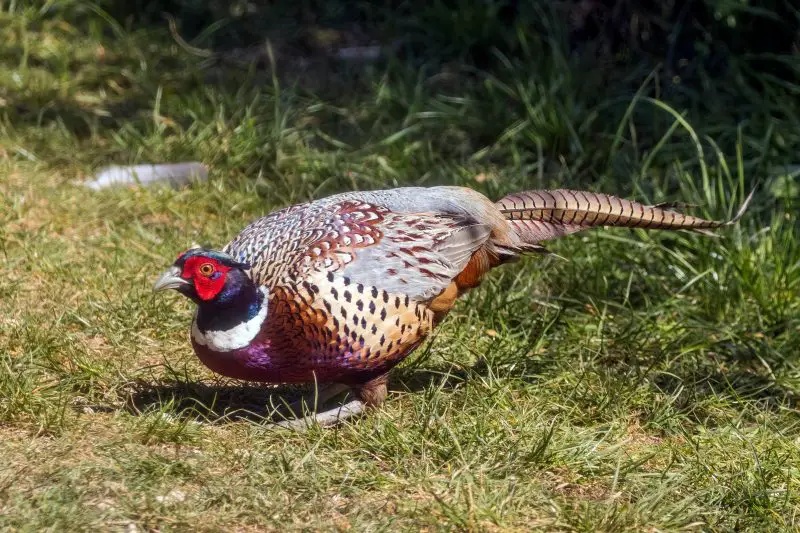
Identification
This large, long-tailed pheasant is unmistakable. Males boast iridescent green heads, red eye patches, and a striking white neck ring. Their golden bodies are marked with black and chestnut barring. Females are mottled brown and highly camouflaged.
Distribution in Michigan
Originally native to Asia, Ring-necked Pheasants were introduced to Michigan in the early 20th century and became common across southern farmland. Though numbers have declined, they remain well-established in the Lower Peninsula, especially in areas with agricultural fields interspersed with cover.
Behavior and Ecology
Pheasants forage on the ground for seeds, grains, and insects. Males are known for loud crowing and harem-style mating behavior. They roost in cover at night and prefer to run rather than fly when threatened.
Conservation Status
Though not native, the Ring-necked Pheasant is managed as a game species in Michigan. Populations fluctuate based on land use and winter conditions. Habitat loss has led to decreased breeding success in some regions.
Where to Spot Them
Check farmlands, field edges, and wildlife management areas, particularly in counties like St. Joseph, Lenawee, and Monroe. Winter is a good time to spot males strutting along snow-covered fields.
3. Ruffed Grouse (Bonasa umbellus)
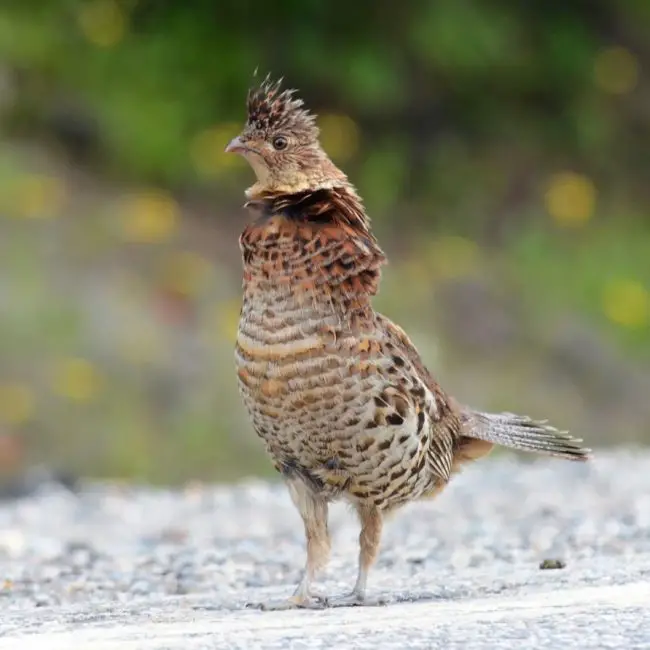
Although not a quail or pheasant in the strictest taxonomic sense, the Ruffed Grouse belongs to the same order (Galliformes) and often shares similar habitats.
Identification
The Ruffed Grouse is a medium-sized bird with cryptic mottled plumage, ranging from gray to reddish-brown. It features a short crest, fan-shaped tail with a black band, and, in males, a “ruff” of dark neck feathers.
Distribution in Michigan
This bird is widespread across northern Michigan and found in aspen and mixed hardwood forests. It is the most common upland game bird in the state’s northern tier.
Behavior and Ecology
Ruffed Grouse feed on buds, leaves, and insects. In spring, males perform spectacular “drumming” displays by beating their wings to attract females. Grouse are non-migratory and burrow into snow in winter for warmth.
Conservation Status
The species is abundant but declining in some regions due to maturing forests and habitat succession. It is a popular target for upland hunters.
Where to Spot Them
Head to the Upper Peninsula or the northern Lower Peninsula, especially to areas with young aspen stands in counties like Alger, Emmet, or Otsego. Look for their drumming logs or listen for the low-pitched thumps in spring.
4. Wild Turkey (Meleagris gallopavo)
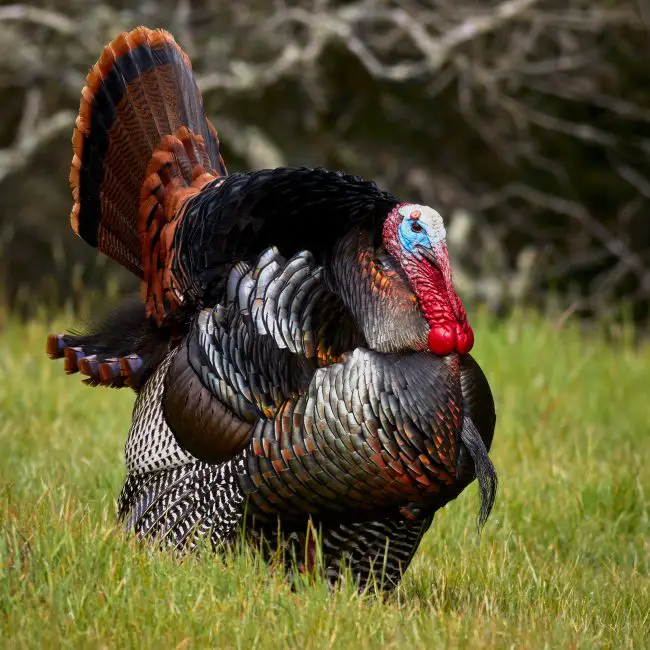
While primarily classified separately from quail and pheasants, the Wild Turkey shares similar game bird status and ecological roles in Michigan.
Identification
The Wild Turkey is a large, heavy-bodied bird with iridescent bronze and green feathers, a bare bluish head, and a fanned tail. Males (toms) are especially striking with their red wattles and beards.
Distribution in Michigan
Wild Turkeys are now widespread throughout both peninsulas, thanks to successful reintroduction efforts beginning in the mid-20th century. They thrive in mixed forests with open clearings and agricultural lands.
Behavior and Ecology
Turkeys forage in flocks for acorns, seeds, berries, and insects. Males perform elaborate strutting displays in spring, including gobbling to attract females. They roost in trees and are surprisingly agile flyers over short distances.
Conservation Status
Once extirpated from Michigan, the Wild Turkey is now a conservation success story. Populations have rebounded due to active management and public support.
Where to Spot Them
Common in southern and central Michigan, turkeys are easy to spot in farm fields, woodlot edges, and even suburban neighborhoods. Allegan State Game Area and Waterloo State Recreation Area are reliable locations.
Quail vs. Pheasants: Key Differences in Michigan
Though quail and pheasants both belong to the order Galliformes, they differ in notable ways. Quail like the Northern Bobwhite are small, secretive, and more dependent on dense ground cover. Pheasants, like the Ring-necked, are larger, flashier, and more visible in open landscapes. Pheasants were introduced, while bobwhites are native, and the contrast between their conservation statuses reveals much about how different species respond to land use change.
Ecological and Cultural Importance
These birds are more than just hunting targets—they serve essential ecological functions. As omnivorous ground foragers, they help regulate insect populations and disperse seeds. In addition, their nesting and roosting behaviors shape plant communities. Culturally, they’ve long been associated with traditions of upland bird hunting, conservation, and rural identity.
Conservation and Citizen Action
Programs like the Conservation Reserve Program (CRP) and efforts by the Michigan Department of Natural Resources (DNR) have been instrumental in preserving habitat for these birds. Individuals can contribute by maintaining brushy field edges, planting native grasses, and supporting organizations such as Pheasants Forever or the Ruffed Grouse Society.
Conclusion
From the secretive bobwhite to the flamboyant pheasant, Michigan’s game birds offer a unique blend of beauty, behavior, and ecological significance. Though some face challenges from habitat loss, dedicated conservation efforts and informed citizen engagement can ensure that future generations continue to hear the call of the bobwhite or glimpse a pheasant tail disappearing into the cornfields. Keep your binoculars ready and your ears open—Michigan’s grasslands and forests are full of life if you know where to look.

